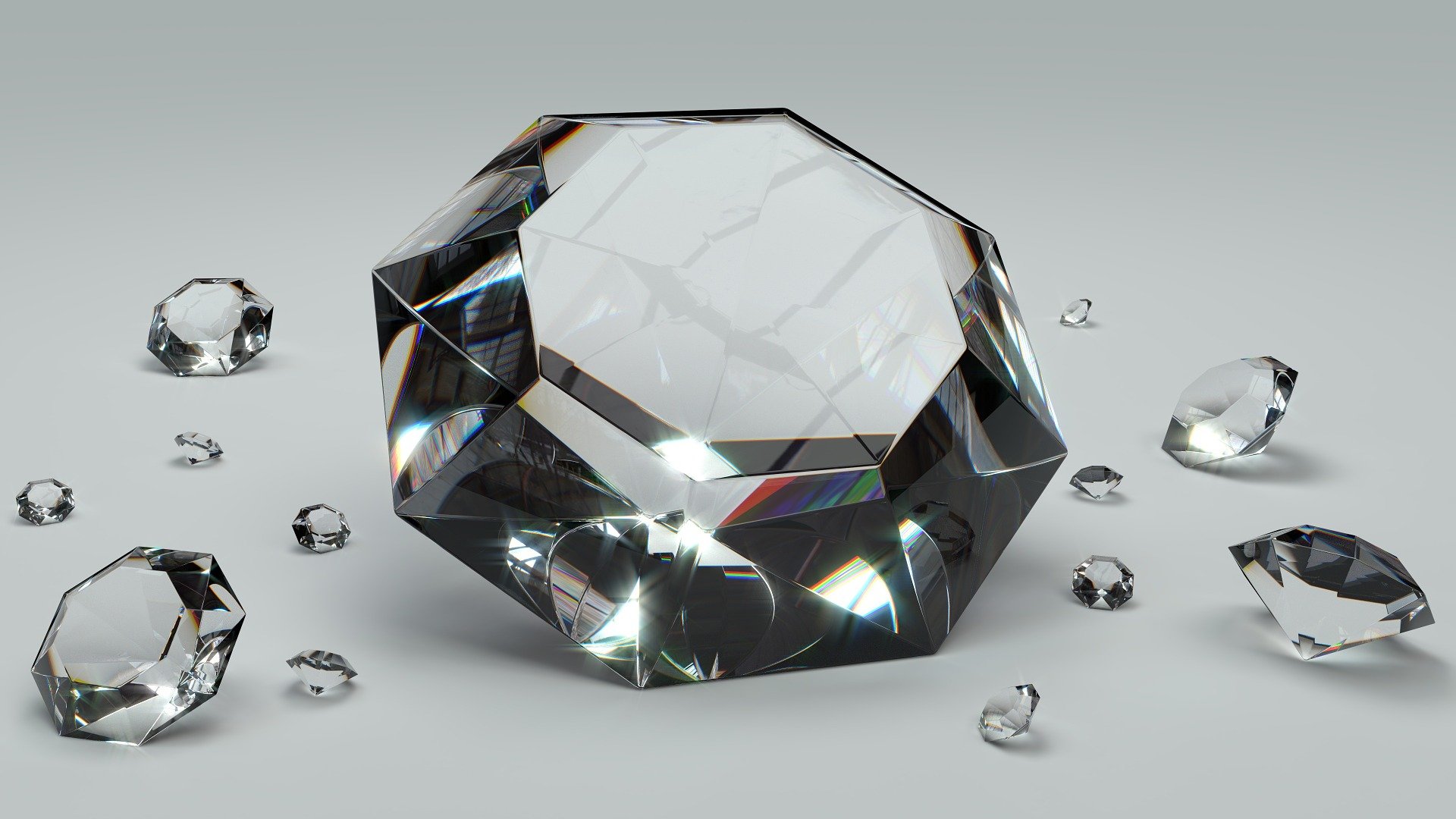Lab grown diamonds are real diamonds grown in a lab using technology. They have the same physical and chemical properties as natural diamonds. Here, we’ll cover what a lab grown diamond is, how they are made, their benefits, and why they are popular.
Lab Grown Diamonds
Lab grown diamonds are also known as man-made or synthetic diamonds. They are grown in a lab using technology that replicates the natural process of diamond formation. They are made of pure carbon, the same element as natural diamonds, and are grown under conditions that replicate the high pressure and high temperature found deep within the earth. They are identical to a mined diamond in every way.
One of the coolest things about lab grown diamonds is their composition. They are made of pure carbon, just like natural diamonds, and have the same crystal structure. This means they have the same physical properties as mined diamonds, including hardness, clarity, and brilliance. They are real diamonds, created through science, not geological time.
Lab grown diamonds also excel in industrial applications. Their high thermal conductivity makes them perfect for cutting tools, heat sinks, and other high-tech uses that require durability and thermal management. This versatility makes them valuable across many industries.
In a nutshell, lab grown diamonds are real diamonds grown in a lab. They match the beauty and durability of mined diamonds, much like the stunning 1 carat diamonds at Whiteflash.com, but with the added benefits of ethical sourcing and sustainability. We’ll get into the science behind these amazing gems soon.
The Science of Lab Created Diamonds
The creation of lab grown diamonds is a modern marvel. There are two methods used to produce these gems: Chemical Vapor Deposition (CVD) and High Pressure High Temperature (HPHT). Both methods replicate the natural conditions under which diamonds form but do it in a lab so you can get high-quality diamonds in weeks.
In the CVD method, a diamond seed is placed in a chamber filled with carbon-rich gas. The gas is heated to high temperatures, and the carbon atoms crystallize around the seed, layer by layer. This forms a single crystal diamond that looks and has the same properties as a natural diamond.
In the HPHT method, the intense heat and pressure of the Earth’s mantle are replicated. Pure carbon is exposed to high pressure and temperature through electric pulses, and a diamond forms. This method mimics natural diamond formation and produces diamonds that are indistinguishable from mined diamonds to the naked eye.
Each method produces diamonds of different sizes and qualities. Controlling the growth process gives you diamonds with fewer inclusions and blemishes and higher clarity and quality. This is why lab grown diamonds are a viable and desirable option for jewellers and consumers.
In a nutshell, the science of lab created diamonds, lab diamonds, and cultured diamonds is human innovation. We can now create diamonds as beautiful and durable as nature.
Now we’ll get into the physical and chemical properties of these gems.
Physical and Chemical Properties of Lab Grown Diamonds
Lab grown diamonds have the same physical and chemical properties as natural diamonds, so they are virtually indistinguishable to the naked eye. Lab grown and mined diamonds are both made of pure carbon in a crystal lattice structure, which gives them their hardness and brilliance.
One of the most interesting properties of lab grown diamonds is their hardness. They score a 10 on the Mohs scale, like natural diamonds, making them the hardest substance known. This makes them scratch-resistant and perfect for jewellery and industrial use.
Optically, lab grown diamonds have the same fire, brilliance, and scintillation as natural diamonds. Their light interaction is the same as mined diamonds. This optical performance is a big reason they are used in high-end jewellery.
Chemically, lab grown diamonds are made of pure carbon, just like natural diamonds. This means they are chemically identical and have the same elements. Their crystal structure is the same, so they will have the same durability and appearance over time.
In short, lab grown diamonds are real in every sense. They have the same physical and chemical properties and look and last the same. Next, we’ll compare lab grown diamonds to mined diamonds and go over the differences and similarities.
Lab Grown Diamonds vs Mined Diamonds
Lab grown diamonds are virtually indistinguishable from mined diamonds to the naked eye. Both look the same.
Aesthetically, lab grown diamonds look the same as mined diamonds; they have the same optical properties. The differences are often price and certification. Lab grown diamonds are more affordable for budget-conscious consumers.
Quality-wise, lab grown diamonds can be better due to the controlled production process. Both HPHT and CVD diamonds are graded to the same standards as natural diamonds. The Gemmological Institute of America (GIA) certifies lab grown diamonds to guarantee their quality and authenticity.
One area where lab grown diamonds differ from mined ones is resale value. Lab grown diamonds have a lower resale value than traditional mined diamonds. But their lower cost often makes up for it.
Lab grown diamonds offer the same beauty and quality as mined diamonds, with added affordability and ethical sourcing. Let’s get into why more and more people are choosing lab grown diamonds for their jewellery needs.
Why Lab Grown?
Choosing lab grown diamonds has several benefits, starting with ethical sourcing. They are conflict-free and ethically sourced, so you can trace their origin without the risk of blood diamonds. This makes them a responsible choice for the ethical consumer.
Another big advantage is sustainability. They require less land and can use renewable energy, so they have a much lower environmental impact than mined diamonds. This fits with the trend towards sustainable luxury and environmentally conscious consumerism.
Affordability is also a big reason why people are choosing lab grown diamonds. They are often 30-50% cheaper than natural diamonds, so they are an affordable luxury. This means you can buy more or higher quality within your budget.
They come in many styles and sizes, often with fewer inclusions and blemishes, so higher clarity. They can fit many jewellery designs, from classic to modern, and can be customized with cubic zirconia.
In short, lab grown diamonds have it all: beauty, ethics, sustainability, and affordability. They have all the qualities of natural diamonds with benefits for today’s consumer. Next, we’ll get into lab grown diamond engagement rings.
Lab Grown Diamond Engagement Rings
Lab grown diamond engagement rings are trending, especially among younger consumers who value ethics and sustainability. These engagement ring options have the same beauty and fire as mined diamonds, with the added peace of mind of ethical sourcing.
Younger consumers are choosing lab grown diamonds for their ethical and sustainable qualities, which fit with modern values. This is part of a broader trend towards responsible luxury and conscious consumption.
One big advantage of lab grown diamond engagement rings is the customization. They can be highly personalized, so it’s easier to create unique and meaningful pieces that fit your style and taste.
They fit all jewellery designs, from classic solitaires to intricate modern settings. This versatility means there’s a ring for every style and preference, so they’re popular among today’s couples.
Lab Grown Diamond Myths
Despite their growing popularity, there are many myths about lab grown diamonds. One of the biggest is that lab grown diamonds are not real diamonds. In fact, they are made of pure carbon and have the same physical and chemical properties as mined diamonds.
Another myth is that they are lower quality than mined diamonds. Not true. Lab grown diamonds use the same methods as nature to create them, so they are chemically and physically identical.
Some think lab grown diamonds don’t have the look or fire of mined diamonds. But they can match the look and quality of mined diamonds, often at a much lower price. So they’re a smart and sexy choice for those who want high-quality diamonds.
Lab Grown Future
Lab grown diamonds are on the rise, with market share expected to grow. By 2023, lab grown diamonds will make up 10% of the diamond market, and by 2025, 20%. This growth is driven by consumer awareness and demand for ethical and sustainable products.
The average price of a 1-carat lab grown diamond was $2,300 in 2024, so they’re more affordable. Affordability plus ethics and environmental benefits is why they’re trending in the jewellery market.
Their popularity is part of the trend towards sustainable luxury in the jewellery industry. Consumers want products that are beautiful and aligned with their values. Lab grown diamonds fit the bill perfectly, offering a responsible and sexy alternative to mined diamonds.
The Asia-Pacific region is leading the lab grown diamond market, producing 50-60% of the world’s supply, mainly from China and India. This region’s production means a steady supply of high-quality lab grown diamonds to meet growing global demand.
Conclusion
In short, lab grown diamonds offer beauty, ethics, and sustainability. They are chemically and physically identical to mined diamonds, so they’re a great choice for high-quality jewellery. Lower cost, ethical sourcing, and environmental benefits make lab grown diamonds a smart and responsible choice for today’s consumer.
Looking forward, lab grown diamonds will be an even bigger part of the diamond market. Their popularity is part of the trend towards sustainable luxury and conscious consumption. Whether you’re looking for an engagement ring or a special piece of jewellery, lab grown diamonds offer beauty, ethics, and affordability.







